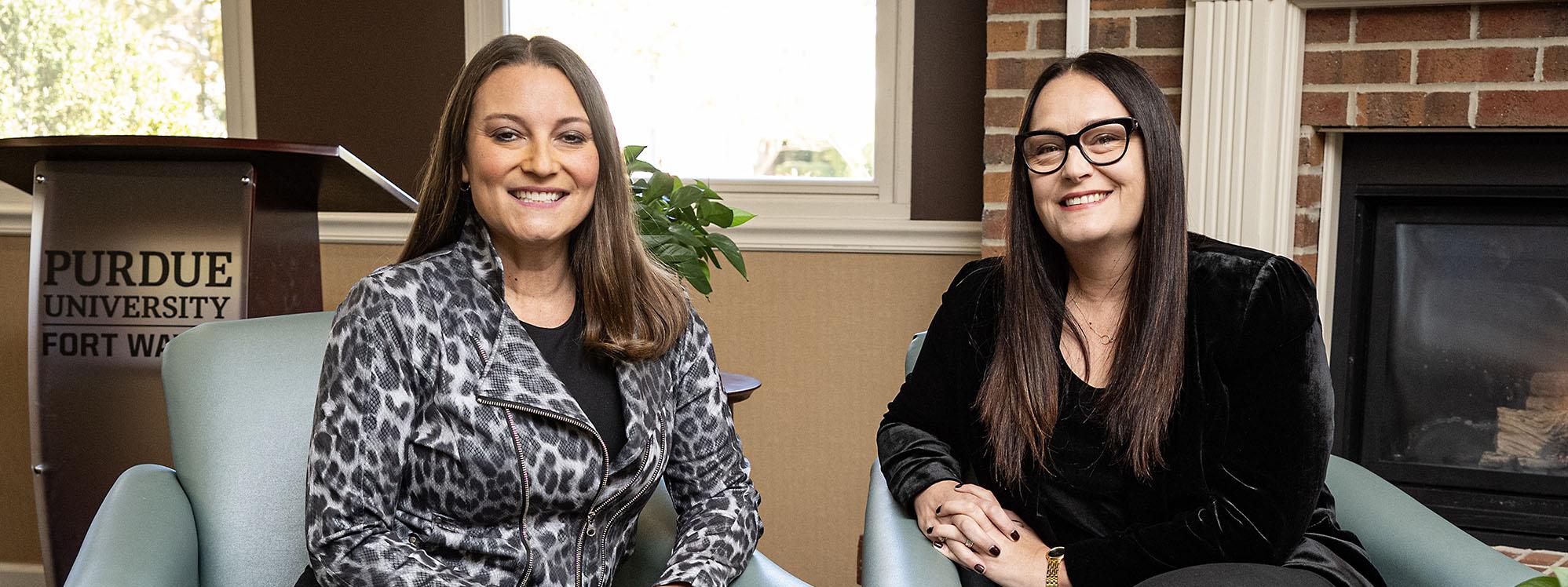
PFW Foundation increasing its role on and off campus
By Blake Sebring
November 7, 2024
When Gilbane Development Company and Purdue University Fort Wayne held a groundbreaking ceremony on Oct. 29 for a 600-bed, 213,000-square-foot apartment complex on the university’s North Campus, few understood the role the Purdue Fort Wayne Foundation played in the $90–$100 million project. The development is being built as part of a public-private partnership on land owned by the foundation, which has helped get an expedited construction schedule off and running.
But what is the PFW Foundation, and what role does it fulfill?
The foundation started in 1958 to spearhead the university’s birth. It has had various forms, currently with five community members and five appointed by Purdue, but the purpose has always been to secure private contributions that advance the university’s mission.
That can include helping support large projects like the new student housing complex and smaller examples such as the women’s basketball team’s summer trip to Italy, providing support for the FIRST Lego League, and helping the Symphonic Wind Ensemble’s 2018 tour of Europe. There was also financial backing to enable PFW Athletics to officially join the Horizon League on July 1, 2020. Recently, the foundation made a donation to support the construction of a new display at Walb Student Union where the university’s famous mastodon bones now reside.
When the women’s basketball team returned from its trip, some players made a special point of personally thanking the board members.
“A few of them mentioned that they had never been overseas before,” said Melissa Schenkel, board president. “Their eyes lit up. Their excitement and what they learned from that trip emitted from their bodies. I just remember sitting there thinking, `You know what, that was a good use of our dollars,’ and I think the rest of the room felt it, too, because they were so ecstatic about what they had done and what they had learned.”
The board members saw the trip as an opportunity for student growth.
“Students take that experience and it reverberates their whole lives with people they influence,” said Dana Berkes, vice president. “It is not just a donation, but an investment in so much more than the student—it’s the web of connections they build throughout the community.”
Over the last few years, the board has shifted emphasis to become a more proactive force in the community. As Glen Nakata, PFW’s vice chancellor for financial and administrative affairs who serves as the foundation’s assistant treasurer said, the purpose is more about exploring what the foundation can do.
“Now they want to be known to be out there,” Nakata said. “The foundation is working very hard to become a true powerhouse in the city of Fort Wayne to support PFW. There is so much low-hanging fruit out there, and we are just starting to go after it.”
B. J. Hull, chief development officer for the university, serves as the foundation’s chief operating officer.
“We’re taking advantage of things the foundation can bring to the university in ways that we never have before; opportunities that exist beyond just giving money,” Hull said. “We’re now growing and looking at the foundation and saying, `What are the ways we can benefit and help the university, and let’s move toward those options.’ It’s just a modernization of the foundation in some ways.”
As Schenkel said, the foundation is not just an umbrella or a rainy day fund. The focus is on how the foundation can utilize its assets to generate revenue for the university. That includes exploring development of foundation land on PFW’s North Campus, including acres of fields along Stellhorn Road.
“What kind of development and facilities would benefit faculty, staff, and students, and then the community around here,” Hull said. “What does this area not have that would be beneficial to the local residents?
“We’re choosing now to take greater advantage of the opportunities that having a separate and private foundation presents to the university. As the university is progressing and making its changes, some of the things the foundation can do are becoming more valuable.”
The discussions may become a 20-to-30-year plan, and Berkes said the foundation’s job is building smart, next-generation philanthropy.
“We feel it is our duty to get involved,” Schenkel said. “We aim to make an impact, not only for ourselves, but for our children, the students, and future leaders of our community. Our mission is to collaborate with the university to empower students to thrive. We’re influencing not just the students’ time at the university, but their entire lives by providing opportunities they might not have had otherwise. The foundation has several ongoing projects, and the momentum continues to build.”




